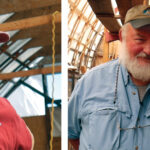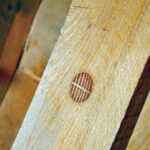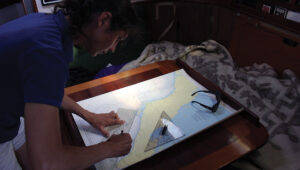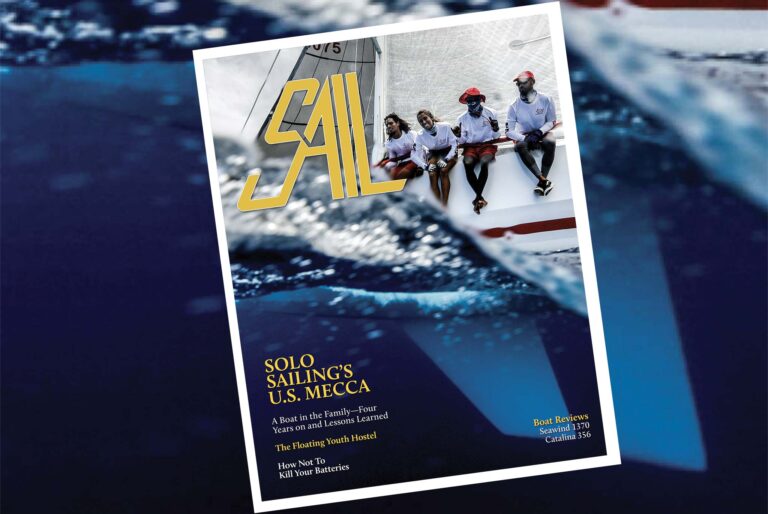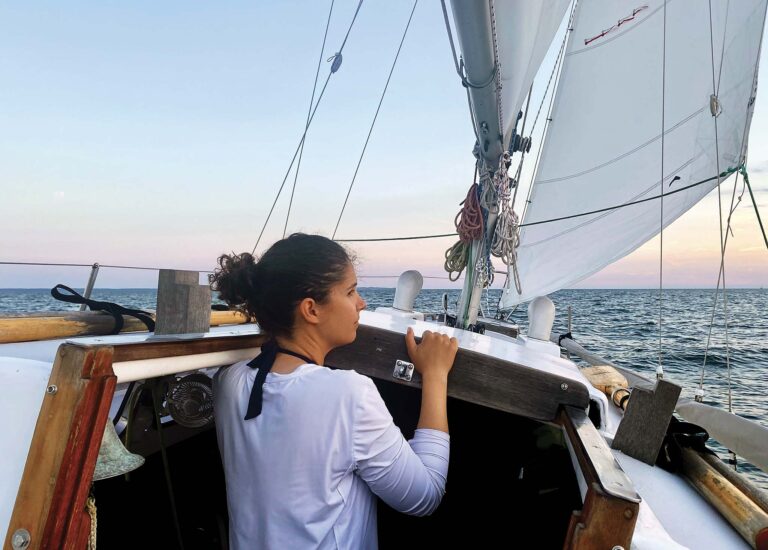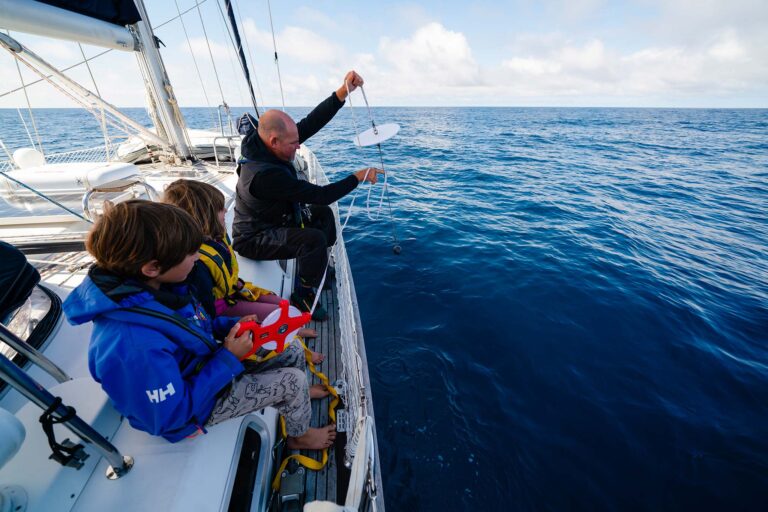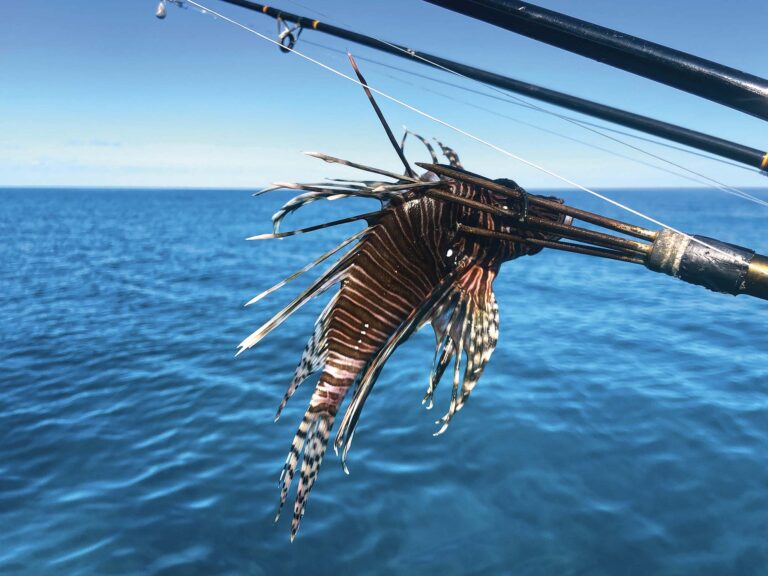
The Bath Freight Shed is a long, low building that smells like wood shavings and is lit by twinkling strings of lights in the rafters. When you first enter, a small exhibit space introduces the significance of the place, complete with historic artifacts and models of a tall ship and a fort. Further in is a sectioned-off workshop where you may meet a rigger parceling line or prepare wooden blocks. Beyond that is a door that leads out onto a deck overlooking the Kennebec River—a deep blue sash through Maine’s verdant landscape, tangling with other rivers and fraying into a vast estuary that’s been the home waters of countless vessels over the centuries. Standing on this same deck, you will find yourself in the shadow of an enormous white shed incubating the latest addition to that timeless fleet.

For the past two decades, volunteers have been hard at work reconstructing the first English-designed ocean-going ship built in the Americas: the 51ft pinnace Virginia, launched in 1608 just 10 miles south of where the Bath Freight Shed sits today. Though much of the knowledge about the original 30-ton ship has been lost in the intervening centuries, careful investigation has brought the project back to life with a few modern updates.
The organization behind this venture, known as Maine’s First Ship, plans to use the ship for educational purposes, bringing school groups out on the water to learn about history, nature and collaboration. Maine’s First Ship is entirely volunteer-based and largely made up of retirees who’ve devoted countless hours to building both the vessel and the infrastructure necessary to work on it (including resurrecting the dilapidated Bath Freight Shed and creating a replica shallop like the one that would have served as a tender for the Virginia).
“People come from all over the country, and they’re amazed by our project. It makes us think we’re doing a lot of good things. It’s been a labor of love for us,” says Orman Hines, CEO of the Maine’s First Ship Program. Finally, this summer, the new Virginia will be ready for launch—a day that’s been 20 (or maybe more accurately 400) years in the making.
The Hunt Map shows the anticipated design for the fort and a sketch of a ship, which inspired the Maine’s First Ship Project
David Wyman drew up this and other plans for the reconstruction in 2008
A History of the Virginia
If you’ve read your U.S. history, you’ve likely heard of Virginia’s Jamestown Colony. But you may not have heard of its contemporary, Maine’s Popham Colony. In 1606, King James I chartered the rival Plymouth and London Companies to establish permanent settlements in the northern and southern portions of North American, with the middle portion going to whichever venture had established a strong enough foothold to claim it.
Two ships from the Plymouth Company were sent to Maine in 1606, but when one was captured by the Spanish and failed to reach the planned rendezvous point, the other turned back. The next year, the company tried again, and both ships, The Gift of God and The Mary and John, arrived safely in the Kennebec River. The colonists, led by George Popham, had been instructed to select a spot near the mouth of the river that would be easily defensible against both the native Wabanaki peoples and the Spaniards, who had technically already laid claim to the territory but never settled it. Popham’s expedition picked a point on Adkins Bay and named it Fort St. George after England’s patron saint.
It was too late in the season to plant crops, so the first order of business was building a warehouse to offload the ships. Once that was finished, The Gift of God returned to England. Notably, the expedition’s draftsman, John Hunt, left at this time after completing the only surviving map of what the settlement was supposed to look like. The so-called Hunt Map’s margins also contain a sketch of a ship—the inspiration for the Virginia. In December, when the Kennebec began to freeze it was decided there wouldn’t be sufficient stores to feed everyone through the winter, and the Mary and John returned to England with 55 of the colonists.

The winter of 1608 was a difficult one, but made slightly less so by the reduced population. Popham died, but was the only death according to British records (though, notably, the Wabanaki reported killing 11 colonists and burning parts of Fort St. George as well). Meanwhile, in Jamestown, half the population died, primarily as a result of starvation and disease. Popham’s admiral and second-in-command, a 25-year-old named Raleigh Gilbert, became the new president of the colony upon Popham’s death. Though he had no real naval experience, under his command work continued on the Virginia, which the colonists hoped to use for exploring, fishing and trading with the native population.
A few months later, a supply ship arrived with news of the death of Gilbert’s older brother, John. This meant Gilbert had now inherited John’s title and the estate of Compton Castle in Devon. “Essentially he said, ‘That’s a whole lot better deal than this miserable place, I’m outta here,’ and everyone else said, ‘Well if you’re outta here, we’re outta here too,’” quips reconstruction rigger David Bellows.
The colonists finished the Virginia and sailed it back to England after spending just 14 months in Maine. The ship went on to make a number of transatlantic voyages. Her final recorded landfall was in Jamestown in 1610, after which she was lost to history.

A balance between new and old
“We have very little direct information about what the original vessel looked like,” Bellows admits. “We have a description that says it was a ‘pretty pinnace of about 30 tons,’ but in this day and age we’re less sure about what they would have defined as a pinnace back then.” That said, there are still plenty of clues to be found, especially in artwork of the era.
“We had research done by Fred Walker in England into what the ship might have looked like, and he did it mainly by [studying] paintings of the Thames River,” Hines says. “We know that the shipwright was a ‘Digby of London,’ so we can look at the paintings of that era that give you an idea of what a pinnace would look like and how the sails were rigged and so forth.”
With respect to the boat’s sailplan, Bellows says the group’s research resulted in “kind of a mix of archaic sail types. It has a sprit mainsail, square of course, and topsail over the main. And it has a lateen mizzen, a jib and a square sail under the bowsprit as well.”
Despite the emphasis on historical accuracy Hines, Bellows and the rest of the Maine’s First Ship Program team have not been averse to using modern materials and methods when it makes sense. For example, the miles of line used in the Virginia’s rigging is synthetic, not natural, simply because synthetic lasts longer.
“There’s a whole lot of work that goes into the rigging, so we don’t want to have to re-do it too often. But it looks traditional, and everything we’re doing with it is traditional,” Bellows says. In fact, one of his big projects has been worming, parceling and serving the line: a weatherproofing method used throughout the Age of Sail, in which riggers would wind a thin cord into the grooves of three-strand line, tie a piece of cloth around it, wrap this same cloth tightly in twine and then paint the entire thing with tar.
The build team is also employing historic methods on the hull, using treenails, or “trunnels,” for example, in lieu of metal fasteners wherever possible. This process involves fitting thick wooden pegs into pre-drilled holes in the hull and then driving a thin wedge into the pegs, thus broadening their circumference so they won’t slip free. Because the fasteners are wood rather than metal, they don’t rot out the surrounding planking and become more secure over time as they absorb water and expand.
Another time-tested method has been used to create the Virginia’s mast and spars. In order to achieve a specific diameter, volunteers will first square off the sides of a log, then slice off the four corners (giving the log an octagonal cross section). From there they continue cutting corners off until the log is round.
Still, there are a few upgrades that had to been made in the interest of safety and practicality. For example, Hines says the Virginia is a little bit larger than what would have been historically correct. “We wanted to have a school groups come aboard, so she’s got a little more breadth than a pinnace would have. She’s 14ft where traditionally she would’ve been 12ft,” he explains. A beamier ship, of course, means a significant increase in tonnage, and the reconstruction will weigh in at about 10 tons more than the original.
Another difference is ballast. “We had a lead keel, about 18,000lb of lead, poured for us,” Hines says. “In 1607 they would have used rocks or gravel or cargo, whatever they had available to make the ship balance correctly.”
Perhaps the single greatest operational difference between the original and the reconstruction is the fact the latter will have an engine. “Ships of that age did have oars, but rowing in the river would be very problematic, so we’ll have a 175hp Volvo Penta V-drive that will enable us to hook an electric drive up to the drive train underneath, so we can sail along without hearing the sound of the diesel,” Hines says. Other updates will include safety features like a set of three watertight bulkheads belowdecks and amenities like a kitchenette and modern head for the captain. After all, a ship needs to take care of its people the same as its people are taking care of it.
Wood for masts and spars is cut down the traditional way
Though made from synthetic material, all the rigging is handmade
David Bellows (left); Orman Hines (right)
Trunnels are used to fasten the hull together
Spirit of Community
Because the Virginia project has always relied on the cooperation and investment of people freely giving their time, it has generated a strong sense of community and commitment. “Since we laid the keel in 2011, we’ve had a lot of different volunteers, but for the most part the same ones have stuck with us for a long time,” says Hines, who has been with the project since the early days himself, originally becoming involved as a result of his role in an excavation of the Fort St. George site led by archaeologist and author Dr. Jeffrey Brain (who has since written a book on the area titled, Fort St. George: Archaeological Investigation of the 1607-1608 Popham Colony). According to Hines, people have come from all over the country to work at the site, including stewards of the Jamestown Colony, who were able to use the dig as a sort of 14-month time capsule, which gave them information about the early days in Jamestown. (The Jamestown site itself had been built upon itself for decades, muddling the archaeological timeline.) Hines recalls learning about Maine’s First Ship through colleagues at the dig site and began his work there in 2001. He eventually stepped up his commitment, becoming the group’s treasurer and later CEO.
Hines emphasizes, though, that he is just one of many committed volunteers driving this project forward. Similarly, Bellows is quick to give credit to Jim Nelson for his expertise in leading the rigging gang. “We’re very fortunate to have a lead rigger who worked on the reproduction of the Golden Hinde and other vessels from this period, so he knows not only rigging, but this era of rigging,” he says.
Hines adds they’d be remiss not to mention shipwright Rob Stevens who has donated his time to the project as well. “He’s a national treasure, really, and we’re lucky to have him, but we’re also very fortunate to have all of our volunteers,” Hines says. “They come from all over the state. We even had one fellow who used to drive all the way up from Boston to work on the ship every week. And people still come back after all this time. That’s what keeps us going.”
Ed note: The Virginia is slated to be launched in June of 2022. To learn more about the ship and the Popham Colony, visit mfship.org
January 2022








